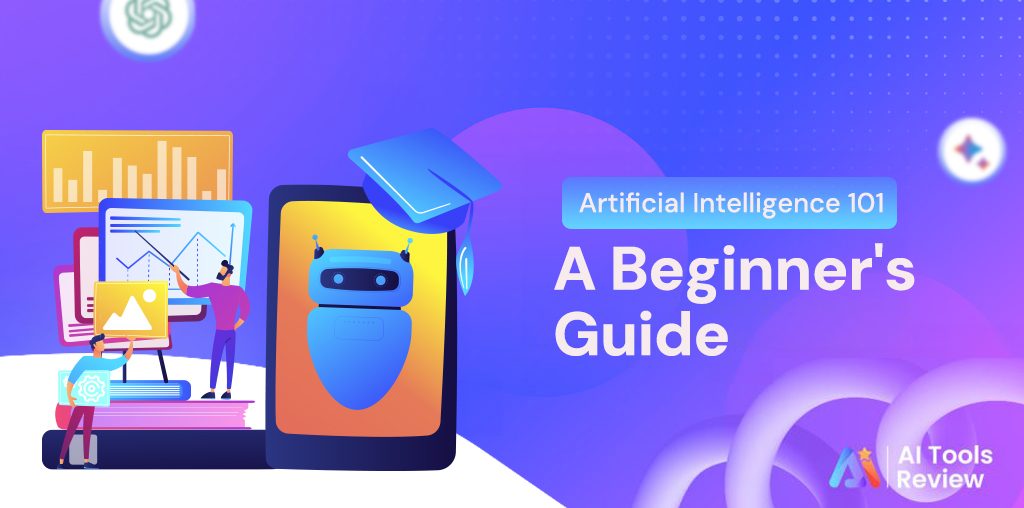Imagine you’re teaching your grandmother how to cook your favorite recipe, but instead of a human, you’re teaching a computer. That’s the essence of artificial intelligence – teaching machines to learn, adapt, and make decisions. But don’t worry if you can’t code or don’t speak “tech.” This guide will take you through the fascinating world of AI in plain human language.
The Recipe for Intelligence
Remember when everyone thought AI was just robots with glowing red eyes? Well, today’s AI is more likely to be the invisible force suggesting your next Netflix show or helping doctors spot cancer in X-rays. It’s less “Terminator” and more “helpful assistant who happens to live in the cloud.”
How AI Learns (Spoiler: It’s Not Magic)
Picture a toddler learning to identify cats. They don’t memorize a rulebook of “cat features” – they learn through exposure and correction. “Yes, that’s a cat!” “No, that’s a small dog.” AI learns similarly, just much faster and with millions of examples.
The Three Secret Ingredients
- Data (The Food) Think of data as AI’s breakfast, lunch, and dinner. The more nutritious the data (accurate and diverse), the smarter the AI becomes. That’s why companies are so hungry for data – it’s brain food for their AI systems.
- Algorithms (The Cookbook) These are the step-by-step instructions telling AI how to learn. Just like different cooking methods produce different results, different algorithms help AI excel at specific tasks. Some are great at recognizing faces, others at predicting weather patterns.
- Processing Power (The Kitchen) This is the hardware that makes it all possible. Modern AI needs serious computational firepower – imagine trying to bake a cake with a candle instead of an oven. That’s why AI development exploded when powerful processors became available.
The “Aha!” Moments of AI
Here’s where it gets interesting. AI has its own “eureka” moments, but they’re not always what we expect:
- A medical AI discovered new antibiotics by thinking about molecular structures in ways humans never considered
- A chess AI made moves so creative that grandmasters initially thought they were mistakes
- An art-generating AI combined styles in ways that created entirely new artistic genres
AI in Your Daily Life (Yes, It’s Already There)
You’re probably using AI dozens of times daily without realizing it:
- Your phone autocorrect? AI.
- Those eerily accurate product recommendations? AI again.
- Your spam folder knowing which emails are junk? You guessed it.
But here’s the fun part – AI can be hilariously wrong too. Like when it confidently labels a chihuahua as a blueberry muffin or suggests winter coats to people living in tropical climates.
The Not-So-Scary Truth About AI
Despite what science fiction suggests, today’s AI is like a savant – brilliant at specific tasks but completely clueless about others. It can beat world champions at chess but can’t understand why winning matters. It can recognize faces in milliseconds but doesn’t know what a smile means.
The Future Is Both Exciting and Weird
Experts predict some fascinating developments:
- AI teachers that adapt to each student’s learning style
- AI therapists that never judge and never get tired
- AI fashion designers that create personalized clothes based on your DNA
- AI chefs can invent recipes tailored to your taste buds and nutritional needs
Your AI Survival Guide
Here’s how to thrive in the AI age:
- Stay curious but critical
- Remember that AI is a tool, not magic
- Focus on skills AI can’t replicate (yet) – creativity, emotional intelligence, and complex problem-solving
- Don’t be afraid to experiment with AI tools
Wrapping Up
AI isn’t just another tech buzzword – it’s a fundamental shift in how we solve problems and interact with technology. The good news? You don’t need to be a coding genius to understand or use AI. Like any powerful tool, from fire to electricity, AI’s value lies not in its complexity but in how we use it to improve our lives.
Remember: The best time to learn about AI was yesterday. The second best time is now. Welcome to the future – it’s less scary and more interesting than you might think.


